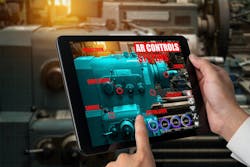How Connected Worker Technology Helps Address Industry Labor Issues
Challenges associated with attracting and retaining workers to the manufacturing and processing industries have been ongoing for decades. And while some types of automation technologies, such as robots, help keep humans out of the repetitive and potentially injury-inducing work that can make industrial employment less desirable, other types can also help attract and retain human workers.
Chief among these technologies that can help attract workers are connected frontline worker (CFW) platforms. This Industry 4.0 technology is designed to guide workers in their tasks using smart glasses, smartphones, tablets, and PCs, enabling them to handle complex processes.
Benefits of CFW technology cited by Gallello, include:
- Up to 50% savings of time on operations such as changeovers through standard work guidance;
- Facilitating autonomous maintenance with step-by-step instruction workflows;
- 30% faster onboarding of new workers;
- Achieving 100% compliance with work duties via automatic execution logs; and
- Time savings of up to 70% on inspection process with digital CAPA (corrective and preventative actions) management.
Beyond delivering specific work instructions and logging activities, CFW platforms also integrate with existing business and operations systems to provide workers with source instructions and inspections from manufacturing information systems, such ERP (enterprise resource planning), MES (manufacturing execution systems), CMMS (computerized maintenance management systems), and LIMS (laboratory information management systems). Such integration also enables CFW platforms to loop worker feedback into these systems.
“This allows for business intelligence platforms to assess performance, check compliance, and identify areas for improvement using this new, correlated data,” says Gallello.



